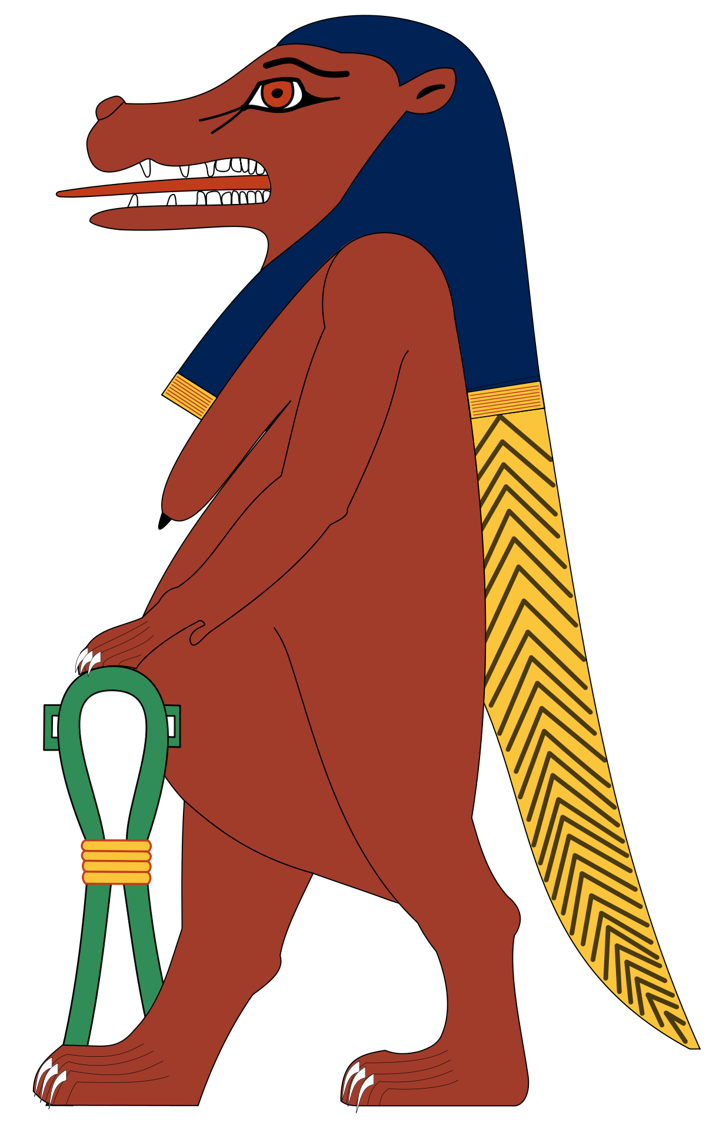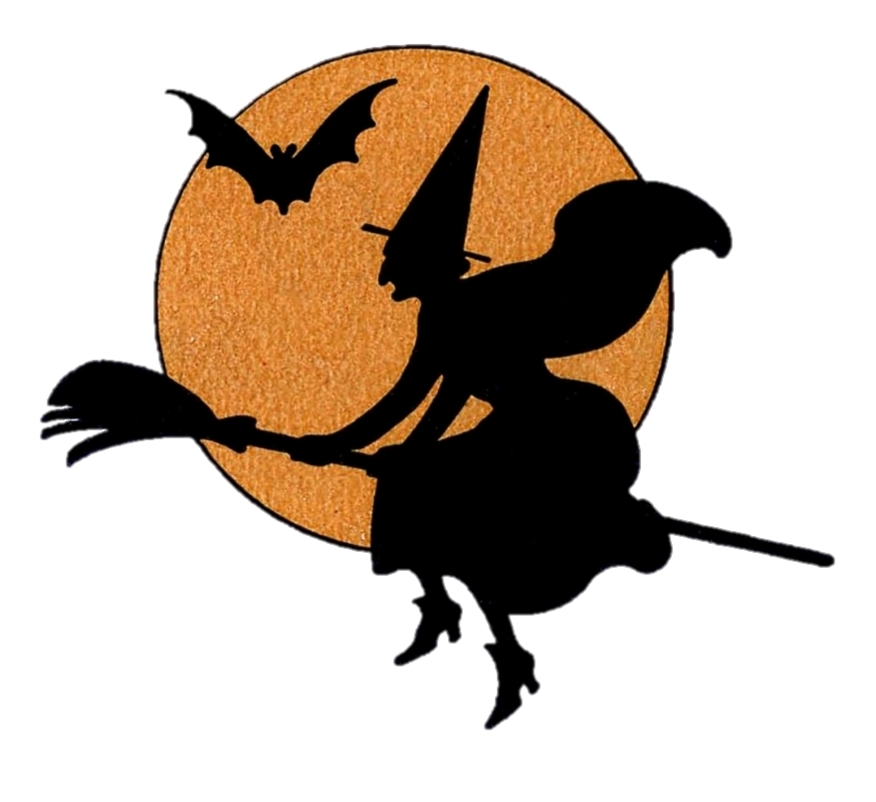


Blessed Dead: The akhu or “Imperishable Ones”; deceased persons who have successfully passed the Weighing of the Heart, whose souls have been reunited with their spirits, and who now reign with the gods in Duat. They are like the Egyptian version of angels or beatified saints. (See The Underworld.)

Chaos Serpent: Apep, the Egyptian devil or anti-god; an astral monster that tries to eat the soul from within, and which seeks to annihilate all life and being. It can never be completely destroyed, but must be ritually execrated. Its name must always be crossed out whenever it is written, and I prefer not to even pronounce the name whenever I can help it. (See Set is a Savior, Not a Devil.)

Duat: “Place Where the Sun is Born,” the Egyptian name for the Underworld. It is the invisible, spiritual counterpart to our physical world, and it is the realm of the gods, the blessed dead, and all other spiritual phenomena. It contains many different heavens (not just one), including the Desert of Set. (See The Underworld.)

Egyptian New Year: Wep Ronpet (“Opening of the Year”), a holiday that falls between late July and mid-August. Its date is determined according to the movements of the star Sirius (in the constellation Canis Major) and the annual inundation of the Nile. I prefer to celebrate it on a fixed date each year—August 15—to commemorate the anniversary of my coming to Set in 1997. (See Happy Egyptian New Year!)

Execration: A curse or hex that is placed on spiritual rather than human adversaries, and which is designed to repel negative energy from your life. It can involve anything from simple charms or incantations to a full-blown exorcism ceremony. (See An Execration Ceremony.)

Friday the Thirteenth: A date on which Setians of the LV-426 Tradition celebrate Set’s more controversial role as the Initiator of Osiris. It’s a time for scrying the positive from the negative, for thanking Osiris and the ancestors, and for honoring cats—especially black ones, which are regarded as lucky. (See Happy Friday the Thirteenth!)

Hallowtide: The collective name we use in the LV-426 Tradition for the three nights of Samhain (All Hallows’ Eve on October 31, All Saints’ Day on November 1, and All Souls’ Day on November 2). It’s a time for celebrating the harvest, preparing for winter, honoring the ancestors, and warding off negative energy. It is also the most important holiday to me personally. (See Halloween: When the Barriers are Down.)

Horned Pentagram: A five-pointed star in a circle that is drawn with two points up. Most people refer to this as an “inverted” pentagram; but for Setians and other esotericists who identify with this symbol, it is right-side up. I call it “horned” because it resembles the head of a horned animal. (See The Horned Pentagram.)

Horus: Egyptian god of rulership and civilization. He is simultaneously the nephew of Set, His twin brother, and the spark of Ra in all people. His symbology includes hawks and other raptors or birds of prey, as well as the Sun and the All-Seeing Eye. He was thought to be incarnate within the Pharaohs. (See Religion in Ancient Egypt.)

Ishtar: Akkadian goddess of fertility, warfare, and the planet Venus (as both the Morning and Evening Stars). She was slain and rose from the dead, and She is one of Set’s many romantic partners. Also known as Ashtoreth or Astarte, She is the second most important deity to me personally, and Her symbols include lions, owls, dragons, and the eight-pointed star. (See The Truth About the “Whore of Babylon”.)

Kheper: An Egyptian word with two meanings; on the one hand it means “scarab beetle,” and on the other it means “to transform” (as a verb) or “a transformation” (as a noun). It is what happens when the sun rises at dawn, when a grub emerges from the soil as an adult beetle, and when a soul or spirit is fundamentally transformed by some profound, life-altering experience. (See Set and the Scarab of Ra.)

LV-426 Tradition: A tongue-in-cheek name we use for our coven and our practices; it was chosen in honor of Ridley Scott’s science fiction/horror film, Alien (1979). We’re just a handful of Setians who happened to cross paths and become like family to each other, and who really dig monster movies. (See The LV-426 Tradition.)

Magic: The use of verbal communication, visual arts, and/or ritualized performances to “activate the spirit” and direct it toward a particular goal. This includes everything from casting love spells to invoking the Creator themself. Magic is the common root of all religion and spirituality, including those traditions that claim it is “satanic.” (See My Understanding of Magic.)

Miew Khem: An LV-426 festival; the Month of the Black Cat, which falls between two consecutive Friday the Thirteenths in February and March, and which only happens three times every 28 years. The Sabbat nights that occur during this month are especially powerful and important. (See Happy Friday the Thirteenth!)

Ministry: An act of community service that is mostly about helping people legally marry, procure good fortune, and/or memorialize their dead. These are practical issues that all kinds of people need help with, regardless of which god(s) they prefer to acknowledge (if any). (See On Setian Priesthood & Pagan Ministry.)
Monster Film as Mythos: The LV-426 belief that monster films are the finest medium for religious expression and interpretation, superior even to most overtly religious films. We sacralize our favorite films by reading Set into their subtexts and incorporating themes or characters into our practices. (See The Monster Film as Mythos.)

Osiris: Egyptian god of fertility, vegetation, and the dead. He was martyred by Set in Egyptian mythology so he could rise again and bring law and order to the afterworld. Thanks to him, every sentient being can now enjoy a happy afterlife. He is also called Ausar, Onnophris, Osoronnophris, Un-Nefer, and Wesir. In LV-426, we associate him with Eliphas Levi’s Baphomet. (See Happy Friday the Thirteenth!)

Pagan: A pejorative term used by early Christians for people in the Roman Empire who practiced polytheism. It has since been reclaimed and is now used for various new religious movements that have developed since the Romantic era, and which take their theological inspiration from nature and ancient mythology. While Paganism is often conflated with Wicca, Wicca is only one example of a Pagan religion.

Priesthood: The act of serving one or more deities with regular rituals and/or offerings, by studying their lore, and by helping others understand them as necessary. To be a priest is a devotional occupation that is all about doing something for a god or a pantheon, or for their followers. (See On Setian Priesthood & Pagan Ministry.)

Quest Against the Serpent: A term used in the LV-426 Tradition for the individual Setian’s struggle against their own fear, ignorance, stagnation, and anything else that might be haunting them or holding them back from reaching their full potential. (See The LV-426 Tradition.)
Qliphoth: Vampiric entities that are formerly mortal, and which intrude upon our reality to feed on the psychological traumas of the living. I prefer to use this term when referring to evil spirits, rather than the word demon. The singular form is qlipha. (See An LV-426 Perspective on the Qliphoth.)

Ra: Egyptian Creator and god of the sun. They are usually characterized as “male,” but since Ra pre-exists gender and begets the universe asexually, I prefer to identify them in gender-neutral terms as much as possible. Everything in nature contains the hidden spark of Ra, and the Chaos Serpent seeks to extinguish that spark wherever and whenever it can, which results in spiritual death. (See Set and the Scarab of Ra.)

Sabbat: A term used differently in many faiths; in the LV-426 Tradition, it refers to our weekly night of worship, which is traditionally held late on Friday evenings. A typical Sabbat meeting will run through the entire night, to the very break of dawn. (See The LV-426 Tradition and Happy Friday the Thirteenth!)

Set: Egyptian god of storms, otherness, and radical individualism; the primary divinity of the LV-426 Tradition. He is said to live “behind” the Big Dipper, and He is the only god strong enough to battle the Chaos Serpent face-to-face. He’s also a trickster who challenges His fellow gods whenever they become too complacent. Also known as Seth, Sutekh, or Typhon, Set is to me as Jesus Christ is to Christians. (See The Egyptian God Set.)

Setian: A person who reveres and emulates Set. Setians come in many varieties and do not all share the same beliefs or practices; but we do all share a passion for Set and for our own self-determination in life. (See Setianism: A Brief Introduction.)

Sha: An unidentified mammal that resembles a red-haired greyhound with rabbit ears. It is the hieroglyphic for Set’s name, as well as His most important holy symbol. It’s also called the Typhonian Beast. (See Set’s Sacred Critters.)

Standing Pentagram: A five-pointed star in a circle that is drawn with one point up. Most people refer to this as an “unpright” pentagram; but for me, it is upside down. I call it “standing” because it resembles a person standing with their arms and legs outstretched. (See The Horned Pentagram.)

Taweret: Egyptian goddess of fertility, midwifery, and childbirth; Her holiest symbol is the hippopotamus, which was revered for its ferocity in protecting its offspring. Also known as Apet, Reret, Thoueris, or Taurt, Taweret is linked to the constellation Draco and is another of Set’s romantic partners. She is commonly invoked to protect women in labor, and She is revered for driving away evil spirits, especially those that relish harming children. (See The Great Female, or When God is a Hippopotamus.)

Typhon: A Greek name that means “whirlwind.” It originally belonged to a Titan from Hellenic mythology, a terrible chaos monster that warred against Zeus. It was later given to Set by the Greeks because they misidentified Him with His enemy, the Chaos Serpent. (See Set and the Greek Typhon: Are They the Same?)

Typhonian: A synonym for the word Setian. In some esoteric circles, it refers to the works of Kenneth Grant, a ceremonial magician who took much of his inspiration from Set. Among history scholars, it more often refers to Setian practices that developed outside of Egypt, and which were contemporary to Jesus Christ. (See Set and the Greek Typhon: Are They the Same?)

Walpurgisnacht: A spring fertility festival, observed on April 30, and associated very strongly with witchcraft. It became one of our favorite holidays in LV-426 and was added to our shared liturgical calendar for this reason. For us, it is a great time for performing execrations. (See Walpurgisnacht: The Other Halloween.)
